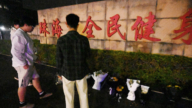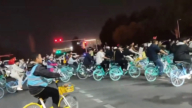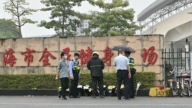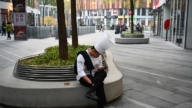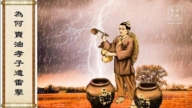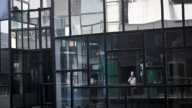【新唐人2014年01月14日訊】中國雲南省藏區香格里拉縣獨克宗古城,週六發生火災,250多幢房屋被燒燬,2/3的古城化為灰燼,當地調動近2000人,花了10個多小時才控制了大火。評論指出,近年來,中國地方政府為了經濟利益,熱衷於對古城開發,卻疏於對景區火災等隱患進行防範。
獨克宗古城,距今有1300年歷史,是中國保存得最好及最大的藏民居群,這個蘊含深厚文化積澱的古城,目前已是一片廢墟。
獨克宗古城火災發生於1月11號凌晨,古城裡的客棧老闆吳女士對《新唐人》表示,古城中下段的「如意客棧餐廳」先著火,報警後,消防車半個小時後才到,結果煤氣管道爆炸,導致周邊全著火了。
雲南藏區香格里拉縣獨克宗古城客棧老闆吳女士:「很多條街都燒了,是木造房子,風一吹就過去了,整片整片都燒了,救火也救不了,也沒辦法,消防栓都沒水,要不然怎麼可能一直燒啊,人的話就沒甚麼問題,就是損失財產那些比較嚴重。」
媒體報導說,總面積1.5平方公里獨克宗古城,受火災面積約1平方公里。大火發生後,當地調動近2000人撲火,10多臺挖土機和39輛消防車,10個多小時後才把火撲滅。
迪慶州政府說,初步統計,火災共造成倉房、金龍、北門等三個社區的335戶、242棟房屋燒毀﹔此外,火災還造成部份文物、唐卡等藝術品燒毀,經濟損失至少一億元人民幣。
知名藏人作家唯色表示,這座藏區老城,近年來由於高度商業化,早已摧毀。現在再說它是「古城」有些牽強。
大陸藏人作家唯色:「我想應該沒有甚麼一千多年歷史的房子,因為就在這個被燒的區域,周圍有一些寺院,寺院也是在文革被砸了,包括香格里拉最大的寺院——松讚林寺,也在文革被砸,文革之後才恢復的、重建的。所以,實際上在這些地方沒有甚麼千年古城。」
唯色說,這座老城在藏語裡叫「結唐」,後來改名為「中甸」,2001年當地政府為了迎合旅遊的需要,改成了「香格里拉」。
唯色:「它更名為香格里拉以後,這個地方實際上高度商業化,我去過7、8回,我們住在那的時候,我也看到過,那些挨肩接踵的全是各種各樣的房子,它的房子都是酒吧、商店、客棧等等,其實所謂古城全是這樣的。」
獨克宗古城是所謂「茶馬古道」上的重鎮,2001年被當局批准為雲南歷史文化名城。時事評論員邢天行指出,中共打著民俗文化的招牌,建立的所謂文化古城,卻被商業化了。
時事評論員邢天行:「至於那些安全隱患,許許多多的東西,並不是它要考慮和關注的,表面上它總結的是一億的經濟損失,如果真的是有歷史上那些東西存在,它絕對不是這樣一個數字,它那個東西是無可估量的損失。」
邢天行指出,這場大火讓人痛惜的同時,也在提醒人們,如果只是一味的開發旅遊區,不去關注和保護那些真正有著千年文化積澱的古城,中國文化將在商業化過程消失殆盡。
唯色在博客中列舉了這一年多來,西藏頻頻發生的火災事件。如, 2012年12月29號,四川省藏區新龍縣茹龍鎮的「則熱寺」火災,燒燬閉關中心及學僧房120多間,佛學院除大殿外全部燒燬。
去年5月4號,也是四川省藏區的白玉縣「嘎託寺」火災,幾十間僧舍和部分佛教文物被燒燬﹔11月16號,同樣四川省藏區的「理塘寺」也發生火災,中心大殿被燒燬,部分僧人還因為搶救珍貴文物而受傷。
今年,1月9號,四川省甘孜藏區的「喇榮五明佛學院」火災,燒燬兩百多間房子,有僧尼受傷﹔才事隔兩天,11號凌晨,雲南「獨克宗」老城再度發生火災。
採訪編輯/李韻 後製/李勇
Fire at Shangri-La County Turns Ancient City Into Ash
Saturday’s fire at ancient city Dukezong, Shangri-La County
of the Tibetan Area in China’s Yunnan Province,
burned down more than 250 houses.
Two thirds of the ancient city turned into ashes.
Local authorities mobilized nearly 2,000 people and
took over 10 hours to get the fire under control.
Commentators pointed out that, local government was keen on
developing on the ancient site for financial gains in recent years,
yet neglected to implement procedures for hazards such as fire.
Dukezong has 1,300 years of splendid history.
It is the largest and best preserved ancient Tibetan city.
It is however, a pile of ruins now.
The fire happened in the early hours of Jan. 11.
Ms Wu, owner of a hotel in the city, told NTD,
“Ruyi Hotel and Restaurant, located at the lower section
of the city caught fire first.
“Fire trucks arrived 30 minutes after the call.
As a result, a gas pipe explosion caused the fire to
spread more rapidly.”
Ms Wu: “Houses on many streets were burned.
All houses were built with wood.
With a little wind, the whole area was on fire.
“There was no way to put the fire out..
There was no water in the water hydrant.
“Else it would not have been on fire for so long.
People are OK though, but there is serious property damage.”
According to the media, about one square kilometer of the
1.5 square kilometers of Dukezong city, was hit by fire.
Local authorities mobilized nearly 2,000 people,
over 10 excavators and 39 fire engines.
It took more than 10 hours to put the fire out.
Government officials in the Diqing Area said, preliminary
statistics indicate the fire affected 335 family’s,
destroying 242 houses in the Cangfang, Jinglong and
Beiben communities.
The fire also caused economic losses of at least 100 million yuan
( approximately US$ 16,547,300), including relics,
thangkas (Buddhist deity paintings on silk) & other works of art.
Renowned Tibetan writer Woeser said, “This old Tibetan town
was already destroyed due to high commercialization.
It is not really an ancient city any more.”
Woeser: “There is not any house with over 1,000 years history.
There are some temples around the burned area.
“They were destroyed during the Cultural Revolution.
Shangri-La’s largest monastery Songzanling Temple, was
smashed during the Cultural Revolution and was rebuilt later.
“So there is no real ancient city with over 1,000
years of history.”
Woeser said, “This old city was called “Jietang" in Tibetan,
later renamed as Zhongdian.
“In 2001 local government changed it to Shangri-La,
in order to meet the needs of tourism.”
Woeser: “It later changed its name to Shangri-La.
This place is actually a highly commercialized area now.
“I visited the area seven to eight times.
There are all kinds of buildings that are hotels, stores & bars.
In fact, all the so-called ancient cities are now like that.”
Dukezong is the so-called important town along the
“Tea And Horse Road."
In 2001 it was approved by the authorities as a
historical and cultural city of Yunnan.
Commentator Xing Tianxing pointed out, the Chinese
Communist Party (CCP) built a commercialized
so-called ancient city, with the banner of folk culture.
Xing Tianxing: “Safety hazards, amongst others,
were not the focus of CCP.
“Reportedly, it caused 100 million yuan of economic loss.
If there really were historical relics in there,
then the cost is innumerable.”
Xing Tianxing: “While mourning over the fire,
we should realize that Chinese culture will disappear
along with the commercialization process.
“If we continue to blindly develop tourist areas instead of
protecting such places,
“the true cultural heritage of over 1,000 years will be gone.”
Woeser cited in her recent blog, frequent fires have occurred
in Tibet in the past year. For example:
Zere Temple fire on Dec. 29, 2012 at Longzhen Xinlong County,
also other areas in Tibet, burning over 120 rooms, including
the retreat center and classrooms.
The Buddhist Institute was totally destroyed except for the hall.
Tibetan Area that
The fire at Gatuo Temple on May 4, 2013 also in the
Tibetan area of Baiyu County,
burned dozens of shag (textiles) & other Buddhist relics.
The fire at Litang Temple on Nov. 16, 2013,
was also in the Tibetan area. It destroyed the central hall.
Some monks were injured whilst they rescued relics.
On Jan. 9, 2014 Sichuan, Ganzi, Tibetans area
La Rong, Wu Ming Buddhist Institute was also on fire.
Also,over 200 houses were burned, some monks yet again injured.
Just two days later, on Jan. 11 2014,
Yunnan Dukezong Ancient City, was on fire yet again.
Interview & Edit/LiYun Post-Production/LiYong







